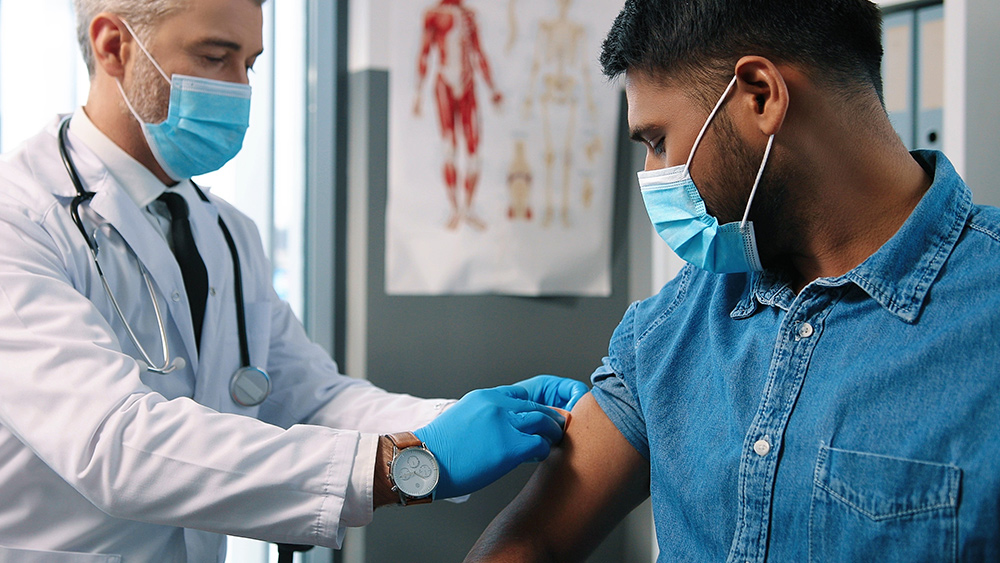Scientists link chemicals used on apples to the rise of a DRUG-RESISTANT pathogen that’s plaguing healthcare facilities
04/05/2022 / By Ramon Tomey

A group of scientists claimed that chemicals sprayed on apples to keep them fresh may be responsible for the rise of a drug-resistant pathogen.
Researchers from India and Canada put forward this possibility in a study published March 31 in mBio. They wrote that since apples and other fruits “are treated with fungicides to prevent post-harvest spoilage,” they could “serve as a possible selective force for, and a transmission reservoir of, antifungal-resistant isolates of pathogenic yeasts.” The researchers focused on Candida auris, which they found in several apples they examined.
They scrutinized the surfaces of 84 different fruits sold in northern India, including 62 apples. Forty-two of these apples were picked up from a market in the city of Delhi, while 20 apples were freshly picked from orchards. Upon examination, the study authors found C. auris in eight apples from the 42 market-purchased apples. The freshly-picked ones did not have the pathogen.
Fungicide treatment on the apples was meant to kill fungal pathogens. However, the study authors mentioned that these fungicides could be helping drug-resistant C. auris strains thrive. The chemicals work on other pathogens on fruits but fail to affect drug-resistant ones.
“As expected, a broad range of fungicides were detected in the screened apples. In addition, high levels of antifungal resistance are common among these environmental [C. auris] isolates from apples. Indeed, large amounts of fungicides are used worldwide in apple cultivation to control fungal disease on apples.”

The researchers also cited several factors that contribute to the development of drug-resistant C. auris strains on fruits. These include the edible wax coating that protects apples from water loss and bruises, the hands of workers contaminated with C. auris that process the fruits and the low-temperature environments where fruits are stored. (Related: Shed and spread: Study finds drug-resistant superbug Candida auris can spread through skin shedding.)
Study co-author Jianping Xu from McMaster University in Ontario, Canada said: “When we look at human pathogens, we tend to look at what’s immediate to us. But we have to look at it more broadly. Everything is connected, the whole system. Fruit is just one example.”
C. auris not only impacts fruit health, but also human health
First identified in 2009, C. auris has spread throughout the U.S., the U.K., Canada, South America and Europe. It has also been spotted in South Africa and India.
According to the U.S. Centers for Disease Control and Prevention (CDC), C. auris presents a serious global health threat due to three main reasons: It resists treatment from multiple kinds of antifungal drugs, it is difficult to identify with standard laboratory materials and it has caused outbreaks in hospitals and other medical facilities.
“Healthcare facilities in several countries have reported that … C. auris has been causing severe illness in hospitalized patients. In some patients, this can enter the bloodstream and spread throughout the body, causing serious invasive infections,” said the CDC.
The pathogen has been found to cause infections in wounds, the ears and the bloodstream. However, it remains unclear if it causes infections in the lung or bladder.
According to the public health agency, patients who have been hospitalized for a long time – including those with a central venous catheter or other lines or tubes attached to their body – are at highest risk of C. auris infection. Those who have previously received antibiotics or antifungal drugs are also at highest risk of contracting the pathogen.
Around 30 to 60 percent of people who caught C. auris have died, but the CDC remarked that many of them had other serious illnesses that the infection exacerbated.
“It is important to quickly identify C. auris in a hospitalized patient so that healthcare facilities can take special precautions to stop its spread,” said the agency.
Watch Dr. Edward Group III explaining C. auris and its dangers below.
This video is from the Dr. Edward Group channel on Brighteon.com.
More related stories:
Scary, infectious SUPERBUG just spread to five more U.S. states, including some in the Midwest.
Ohio hospital spreading deadly infectious disease through its water systems.
Sources include:
Submit a correction >>
Tagged Under:
agriculture, antifungal resistance, apples, Candida auris, chemicals, discoveries, drug-resistant strains, farming, fruits, fungicides, hospital outbreaks, infections, research, superbugs
This article may contain statements that reflect the opinion of the author




















